 Renata Gajoch-Bielecka
created
edited
Renata Gajoch-Bielecka
created
edited
6 rules of influence according to Cialdini and how to use them in email marketing
Back to list of articlesIn marketing, we often encounter various activities that are meant to result in particular responses that help us to make a sale, increase interest in a product or get someone to take part in a campaign. We all learn that some strategies work better than others but sometimes we don’t know why. This riddle fascinated Robert Cialdini, who explored the subject in his book “Influence: The Psychology of Persuasion”, which was the result of 15 years of research. The book has sold three million copies and is still very relevant today despite being published more than thirty years ago. The insights it shares have many applications in the world of marketing, including for email marketing campaigns.
To make it easier to navigate our look at Cialdini’s work, just click on the chapter you’d like to jump to.
1. Reciprocity
2. Social proof
3. Liking
4. Authority
5. Scarcity
6. Commitment and consistency
Let’s take a look at how Cialdini’s work applies to examples from the world of email marketing.
Reciprocity
The idea of reciprocity tells us that we try to return the favor when someone - a person, a company, an institution - gives us something or helps us. A great example from the Cialdini’s book tells of when Ethiopia offered five thousand dollars to Mexico in 1985. It was odd since at time Ethiopia was consumed in conflict driven by a civil war and in the middle of a severe drought. Thousands fell victim to starvation and illness. Despite all this, Ethiopia still put together five thousand dollars to send to help the victims of an earthquake in Mexico. Why?
After all, no one would fault Ethiopia for keeping that money for itself at that difficult time. It turns out that in 1935, Mexico sent humanitarian aid to Ethiopia when it was in need in a time a crisis, in a war against fascist invaders. This is reciprocity - remembering help that was given fifty years earlier.
So how is this rule applied in marketing and everyday life? Think about free samples given out in supermarkets and stores. The act of giving us something for free makes us consider returning the favor by buying whatever product it is. It’s just in our nature to think this way. And what about email marketing?
When on online store gives us some kind of coupon or rebate code, it gets us thinking about making a purchase.

The New York Times created an interesting take on the idea of reciprocity.
Social proof
This is the idea that our behaviour is affected by the reactions of others. If we don’t know how to react in a given circumstance, we often choose our course based on what others do. This is why online sites make it easy to leave reviews and opinions about products and services.
Social proof is used very often in marketing. It appears in lines like “Thousands of satisfied customers”, “92% satisfaction rate” that are meant to make us comfortable with deciding to buy.
So how do you put this to work in email marketing? It starts with getting new subscribers to your newsletter, like HubSpot did:
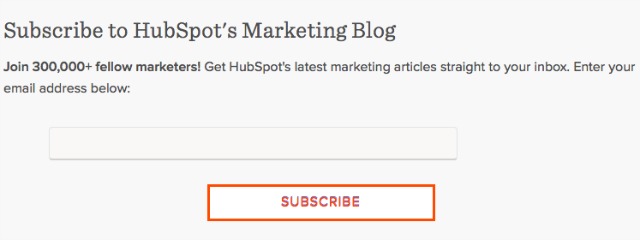
This is very strong social proof. How can 300,000 marketers be wrong? It must be worth signing up for.
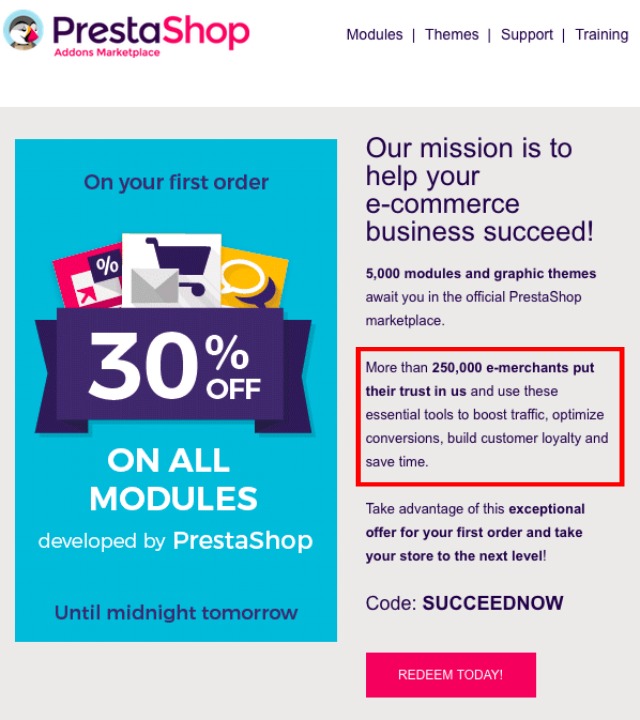
PrestaShop tells us exactly how many people rely on them. It makes it easier to trust them to meet your needs too, doesn’t it?
Here’s a recommendation for a particular t-shirt. The ratings look pretty good, right? It must be safe to put it in your cart...
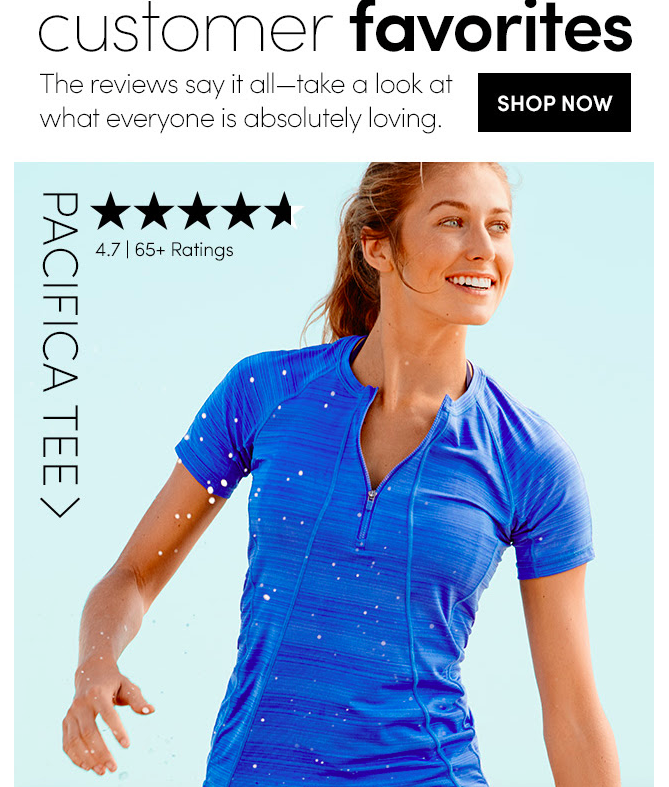
3. Liking
We’ve all been in a situation where we promised to do someone a favour despite not having time and not really being enthusiastic about the whole thing, right? This is an example of the power of liking someone. It makes perfect and sense and is again consistent with our nature - we want to help people that we like.
One factor influencing what and whom we like is commonality. You like walking in the mountains? So do I! And just like that, we have something to talk about and we’re on our way to being friends. Getting along and working well together makes us liked people and even companies better too.
Look at the warm and simple way Piktochart welcomes new users. Who wouldn’t feel like part of the club after this? It’s easy to return the sentiment - we like you too, Piktochart!
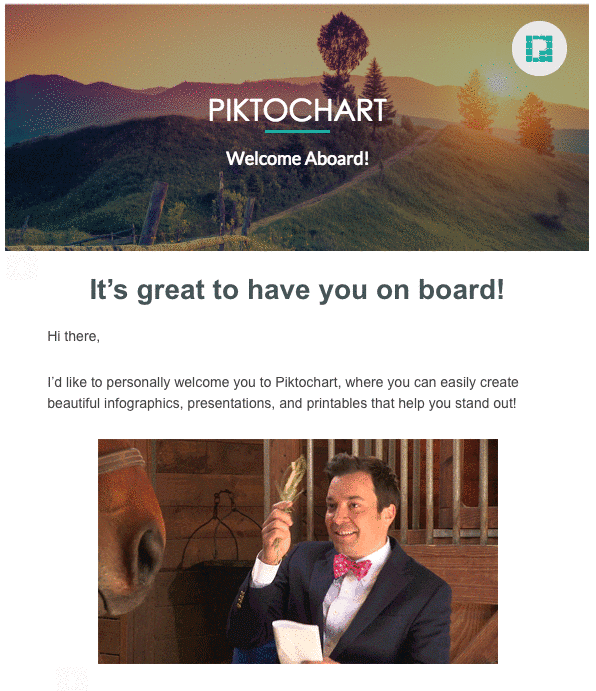
Forever 21 just comes right out and admits that they like us a lot and that’s why we get 10% off discount. Don’t you want to like them back?
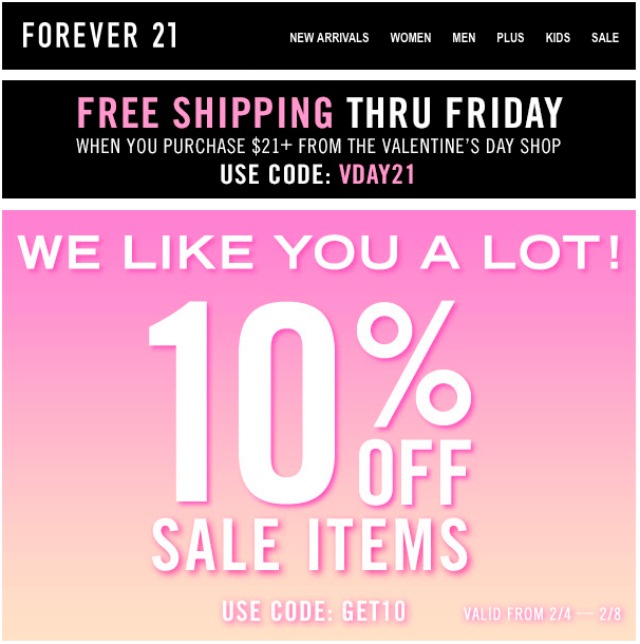
4. Authority
Authority has been with us, well, pretty much forever. It starts with our parents, who, we have to admit, know better than we do. Their authority involved a certain degree of rewards and/or punishments. As we get older, we encounter other people who have some kind of authority over us: teachers, bosses, doctors, lawyers, etc.
Consulting authorities makes sense. Instead of reading through tons of legal texts, you can talk to a lawyer. It just saves time and effort to be able to go to someone who already has the specialised knowledge that we need.
A common example used to illustrate the concept of authority in advertising involves actors promoting medicine and diet supplements. They slip on a white doctor’s coat and - presto! - they become credible as a medical authority. Part of our brain knows that we’re looking at an actor, but we still think we’re listening to someone who knows what they’re talking about.
How can you put this idea to work in email marketing? Look at how Mixergy offers a yearly membership for 199$. An additional incentive is full access to interviews with marketing stars like Gary Vaynerchuk, Neil Patel, Guy Kawasaki and more.

YLANG 23 recommends jewerly created in cooperation with Jennifer Meyer, a famous American designer.

5. Scarcity
he idea of scarcity is based on the assumption that we want what we can’t have or something there’s not enough of. We value things that are rare and unique. They appear more valuable to us because not everyone can have them.
Why do we think this way? Because being hard to obtain makes something more valuable - they convey prestige and higher quality. Things like antiques, collector’s items and rare stamps are valuable precisely because they are rare.
Let’s look at how scarcity fits into email marketing. It’s enough to create a sense of urgency that makes customers afraid to miss out on something. It could be a sale, free shipping and products available for only a limited time - scarcity can apply to many aspects of an online business. When trying to attract new subscribers for your newsletter, you can offer exclusive content only available after signing up. It creates the incentive to share an email address by rewarding new subscribers with something reserved only for them.
Here’s a common example of offering a scarce reward for acting now - free delivery.

t’s the same with this example from another online store. Just under three hours left until this offer is gone! Using deadlines pushes recipients to act now.

6. Commitment and consistency
In his book, Cialdini describes work done by two Canadian psychologists that revealed an interesting truth. When placing bets on horse races, bettor were more sure of their choices just after paying for their bets than just before. The interesting part, of course, was that the horse’s chances of winning hadn’t changed at all!
The reasons for this are again found deep within our human psychology. We want to be seen as competent and qualified in what we do. When we make a choice or take a position on a given issue, we want to be seen as having made the right choice in the eyes of others.
How does this relate to email marketing? Through up-selling, for example. Buying one item makes us ready to buy another since we justify it in terms of taking advantage of a good time to buy. The same idea applies to sales that give a discount to additional items purchased.
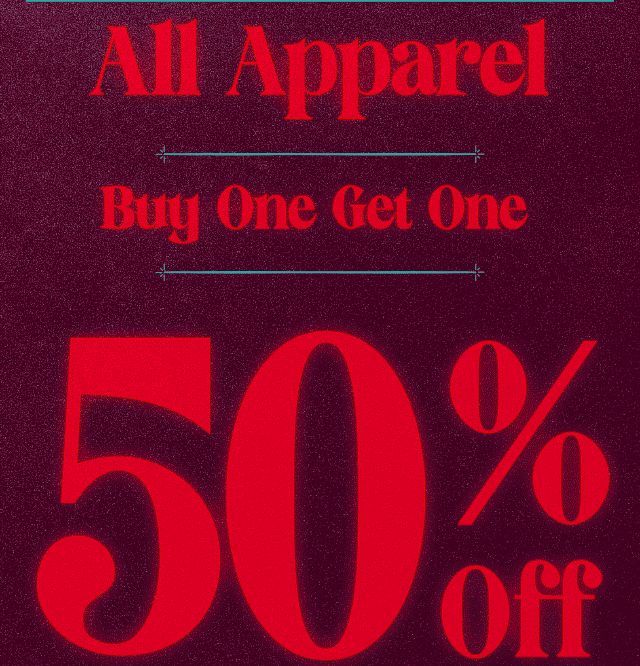
Here’s another example of the concept of consistency. Buy a sofa for 750 pounds and get 30% off another matching piece.

Cialdini in marketing - summary
Cialdini’s insights can be applied to email marketing in different ways. Hybrid strategies combining his ideas can also work well. Think about a 50% discount that can only be used in the next 24 hours along with a button that shows how many people have taken advantage of the offer. Then, at checkout time, use up-selling to recommend complementary products. This is what modern online shopping is all about!

